#Italian fairytale
Explore tagged Tumblr posts
Text

Moments before I said yes 💍
#castellammare di stabia#architecture#italy#italytrip#engagement#fiancée#pretty#omg#Italian fairytale#buildings#love#dreamcore#adventure#beautiful#bts#city#main character#energy#history#life#first post#baby#lovers#honey#darling honey light of my life#darlingcore#light#mountains#volcano#naples
1 note
·
View note
Text
1 note
·
View note
Text
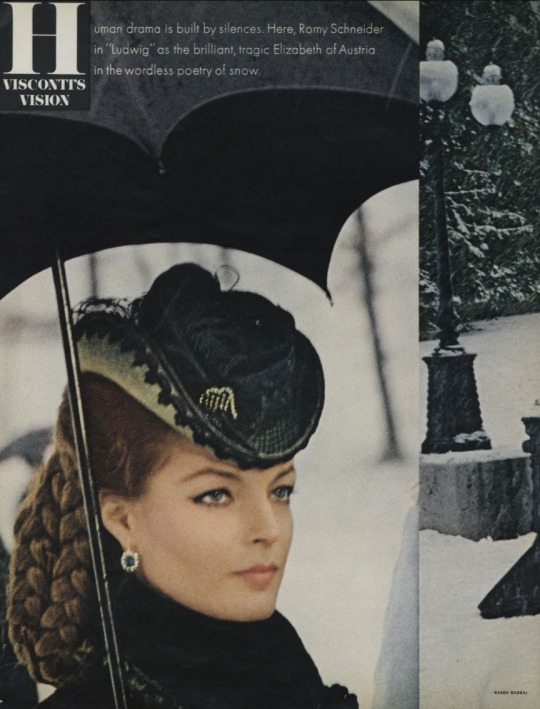
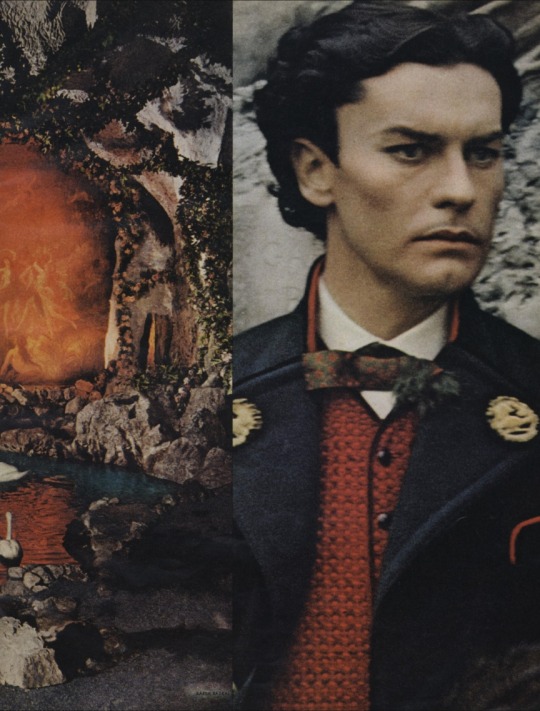
𝐑𝐨𝐦𝐲 𝐒𝐜𝐡𝐧𝐞𝐢𝐝𝐞𝐫 𝐚𝐧𝐝 𝐇𝐞𝐥𝐦𝐮𝐭 𝐁𝐞𝐫𝐠𝐞𝐫 𝐟𝐞𝐚𝐭𝐮𝐫𝐞𝐝 𝐢𝐧 𝐕𝐨𝐠𝐮𝐞 𝐟𝐨𝐫 𝐩𝐫𝐨𝐦𝐨𝐭𝐢𝐨𝐧 𝐨𝐟 '𝐋𝐮𝐝𝐰𝐢𝐠' (𝟏𝟗𝟕𝟑)
#helmut berger#romy schneider#german actresses#austrian actor#ludwig ii#ludwig 1973#luchino visconti#fairytale#fashion#vogue#vogue magazine#italian cinema#photography#1970s#70s#seventies
95 notes
·
View notes
Text
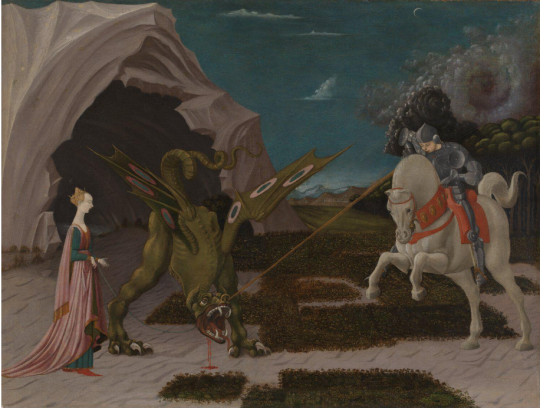



Saint George and the Dragon, Paolo Uccello, 1470
#saint george#saint george and the dragon#princess#paolo uccello#national gallery#art history#art#italian art#aesthethic#painting#15th century#horses#armour#knight#clouds#fairytale#dragon
59 notes
·
View notes
Text
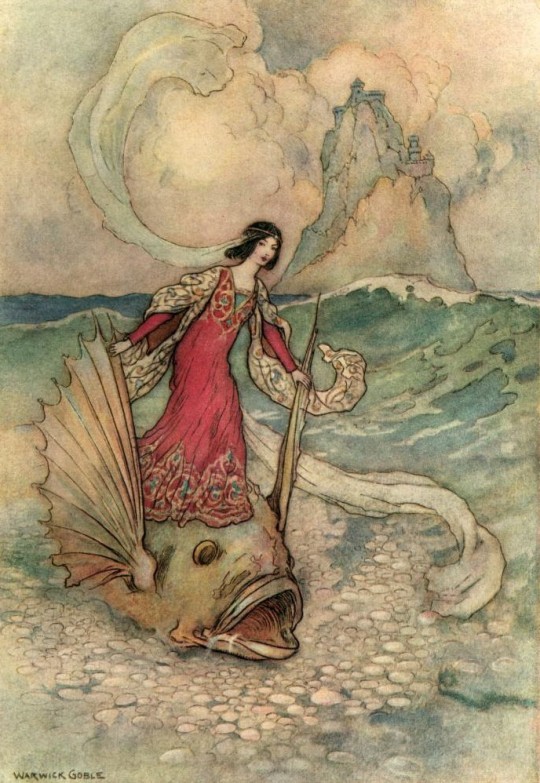
Rita riding on the Dolphin, from The Three Enchanted Princes for Stories from The Pentamerone by Warwick Goble (1911)
#warwick goble#art#illustration#golden age of illustration#1910s#1910s art#vintage art#vintage illustration#vintage#english artist#british artist#books#book illustration#fairy tale#fairy tales#fairytale art#italian folklore#classic art
681 notes
·
View notes
Text
As I have been reblogging and looking back at Sleeping Beauty stuff around the Internet, I realized the thing that is bothering me a bit... When it comes to the you know "original" format of Sleeping Beauty.
Everywhere on the Internet you have these posts and videos and whatnot about "The dark truth behind Sleeping Beauty" or "The Horrifying Origins of Sleeping Beauty!", and they all refer to the fact that in the "original" version of the tale, she got raped in her sleep. This is the "dark fact" everybody LOVES to spread around and talk about. Except... Except the version they refer to is Basile's "Sun, Moon and Thalia".
Why does that matter? I'll explain.
Everybody depicts "Sun, Moon and Thalia" as this sort of dark, horrifying tale of a grim and gruesome crime. They will have in their video a dark background, and creepy illustrations, and they will take an ominous horror movie voice and whatnot.
But there's a big problem with that. Basile's stories were all except serious. They were humoristic tales. Or more precisely, they were farcical stories. Farces. There's a reason its "twin compilation", Straparola's fairytale collection, is called "Facetious Nights". So the very idea of presenting these stories as if they were meant to be taken seriously is completely misreading the story's tone. Yes there was a rape - but if you extract this from the entire context and storytelling, you make this tale sound like something it is absolutely not.
"Sun, Moon and Thalia" is not meant to be a horror story. It was not meant to be read as "serious" story. It has nothing to do with either the Grimm or Perrault fairytales. The entirety of the "Pentamerone" is basically a folk-sex comedy. If such a thing can exist.
Every fairytale of the Pentamerone is opened by a small recap of the story announcing what it will be about - and already from the get-go the very two lines opening this recap give the humoristic nature of the tale away. "Thalia dies because of a splinter". I mean come on - the joke is obvious. A girl gets a splinter, she dies. And if this wasn't enough the rest of the sentence can be translated as following: "she is left in a room where the son of the king penetrates and makes her two children". The choice of the word "penetrate" is to highlight the pun in the original line where the prince entering Thalia's bedroom and the prince entering Thalia's body is resumed in one same verb.
For more breakdown of the jokes of the story, see below the cut:
As I said before from the get-go the "curse" is treated as a joke. You have this king that summons scholars to make his daughter's horoscope, right? And what does it say. "She is in great danger... BECAUSE OF A SPLINTER!". This is literaly the killer rabbit of the Monty Pythons.
In this story, what does the little old woman that offered the princess the spindle does, once the princess falls dead? (Because she is dead in this version, a magical death, but dead still). Does she warns everybody and cries for help as in Perrault's version? No! "She was quick to find back the stairs [from which she came in]" and she runs as fast away as she can without warning everybody, because she's not going to get into trouble because of some random girl that wanted to see how to spin.
The whole arrival of the prince is very, VERY unprincely and part of the joke. (Well it is a king here but I'm going to call him "prince" so as to not lose people). So he is hunting, right, and his hunting falcon enters the countryside building in which the king locked up his daughter's corpse. The prince wants to get back his bird, so he knocks - because he believes the house is inhabited. And since nobody answers and he REALLY wants his bird back, he fetches a ladder and is forced to climb up a window like a vulgar thief. And he is royalty, remember.
What is the prince's first interaction with the dead Thalia? Believing she is asleep, he starts talking to her. And since she doesn't answer he kind of shakes her around in trying to wake her up. And then suddenly, realizing she kind of looks good (an that she is visibly not alive anymore), he "does his little business" and promptly puts her back where he found her and leaves. Because he is, like most men in the Pentamerone a stupid horny dog without much morals that has the most sudden and bizarre bursts of sexual desire. Cause again the Pentamerone is a sex comedy.
In fact, in the story of "Sun, Moon and Thalia", the prince is MEANT to come off as quite stupid. He is stupid. First off he didn't get that Thalia was dead when he saw her. Then, as soon as he leaves the funeral-house, it is said he "forgot all about this adventure". Like literaly, he forgets all about it - and only suddenly remembers it randomly when Thalia wakes up. (The narration itself highlights the randomness of the events - the fact the prince remembers Thalia is random and for no reason, and in the same way there are two fairies that randomly appear out of nowhere to take care of the two babies and we are never explained anything about them - they even frighten poor awakened Thalia because she doesn't know who brings her magically food every day). When he sees back Thalia, he is all joyful and happy and he is like "Let's start a family! I'm a dad, woohoo!" ; and then the narration drops the bomb that nothing had foreshadowed: "Now, his wife was waiting for him back at the palace." The randomness of dropping the fact he has a wife is meant to be the joke, since we were led to believe he was a bachelor. But given the prince's tendency to forgetfulness it is very likely that he simply forgot he had a wife.
More of the prince's obvious stupidity and air-headedness. On one side how he betrays Thalia and her children's names to his wife - because he just can't stop repeating and singing their names out loud, day and night, even when eating or sleeping, due to how silly-happy he is. On the other, the reason why he is absent while his wife tortures Thalia: he got angry at a comment of hers, and because he was furious, he literaly had to go to ANOTHER LAND just to vent his anger. Literaly, he leaves his palace and moves to another of his domain just because he got pissy. And why did he get pissy? Because his wife kept ironically singing to him "Eat, because what you eat belongs to you" when she served him his "children" - and the stupid prince, unable to understand what she meant, literaly answers "Of course it belongs to me: I'm the bread-winner of the family, while you're doing nothing and bringing nothing to the house". [Which by the way, highlights the fact that in this couple, the wife is depicted as profiting off the king's wealth and power].
Speaking of the dinner around the fake "children": this meal is another sex joke. Because the two of them, the wife and husband, are "panting with desire" around the dishes, and keep singing stuff like "Oh that's good, oh that's good!" and "Come on, eat, come on eat!" making it all an erotic scene. A ridiculous, grotesque, perverse erotic scene around what one character believes to be a cannibalistic meal, while the other just very loudly appreciates good meat.
When the queen tries to have Thalia killed, Thalia tries to defend herself by the fact she didn't know of the queen's existence, and that any sexual thing that happened between her and the prince was in her sleep - which the queen of course does not believe because of how ridiculous it all seems. I mean you catch who you believe is your husband's lasting extra-marital mistress and what is her excuse? "Oh no you see, he made me my kids when I was asleep. Well kind of dead. I didn't know. No he did not wake me up. I didn't wake up either when the kids were born. I'm a really deep sleeper. And it was because of a splinter you see..." Literaly, imagine yourself in the place of the jealous queen hearing all that.
Thalia gains time on her execution by asking the permission to remove her clothes, and the queen accepts, but as a joke she accepts out of greed because she literaly wants to take back Thalia's dress and jewels for herself. And each time Thalia removes a piece of her clothes, she screams. She screams in hope of alerting the prince. But since the prince is far away, he doesn't hear until the very last scream. Meaning that Thalia literaly strips herself in front of the queen, while screaming every time she takes off a piece of clothing, to visibly no effect (which must leave the poor queen quite confused), and it is only when Thalia gets naked and pushes the final scream that the prince suddenly arrive. You can imagine Thalia going: "FINALLY! I've been screaming for hours now!" (especially when you consider how much pieces of clothing princesses wore at the time).
Literaly one of the threats the prince gives to his wife is "Get ready to go fatten up the broccolli". As a metaphor for being dead and buried underground. Tip-top manly threat. In fact the prince is here quite proficient in ridiculous poetic metaphors: when the cook reveals he saved his children, the prince says "Get ready to move out of the small kitchen of my castle to the vast kitchen of my heart."
And of course the final "moral" of the story is also part of the entire farcical joke that is this story. "People who are lucky receive good fortune, even in their sleep". You literaly have a girl who is randomly raped in her sleep and gives birth to children in her dead-sleep, and then is almost murdered by the rapist' wife... And THAT'S the moral of the story? If you take it all literaly, then you are a fool. Or at least Basile would have called you a fool.
Again, people tend to forget that when it comes to literary fairytales (but also a lot of folk-fairytales) there is a TONE that is important. It is the brothers Grimm and other collectors after them that imposed the idea that fairytales were meant to be read "seriously". A lot, LOT of fairytales were originally humoristic - even going into dark humor or sex comedy. And whenever you go by Straparola or Basile, you HAVE to look at them under the angle of a joke or humor, and search for the puns and caricatures and ridiculousness within these tales. Because these books were meant to be read as such. They are like Rabelais' Gargantua or Shakespeare's comedies. You can of course reinterpret them as "serious" tales... But it won't remove the fact the original was humoristic.
#sleeping beauty#dark fairytale#thalia the sun and the moon#sun moon and thalia#thalia sun and moon#basile#pentamerone#italian fairytales#fairytale history#humoristic fairytale#sex jokes#sexuality in fairytales
19 notes
·
View notes
Text
READER AND AUTHOR SIDE OF TUMBLRRRRRR‼️‼️‼️
TELL ME IF THERE IS DEMAND FOR A RETELLING OF AN ITALIAN FOLKTALE REVOLVING AROUND THE CONSEQUENCES OF ONES ACTIONS, DECENT TO MADNESS, AND MURDER
AND MY LIFE
IS Y O U R S‼️‼️
#I meannnn#I'm gonna write it anyway#but it's good to know whether or not people will actually read it#dark fantasy#fairy tail#fairy tales#dark fairytale#fairy tale retelling#author#writer stuff#creative writing#writing#reading#fantasy#italian folk tales#italian fairy tales
7 notes
·
View notes
Text










Di Fiaba in Fiaba (1997) by Giovanni Giannini & Violen Illne
#retrocatastrophy#Fairy tales#Italian illustrations#Italian artists#fairytale art#Little mermaid#Cinderella#Beauty and the beast#rapunzel#Donkeyskin#princess and the frog
13 notes
·
View notes
Text
I am having such a like. Emotional moment abt Lou using the story of Pinocchio from such a personal and new angle and intersecting it w his experience as a black man in a way that is so true to the character. Like if this is not an amazing example in favor of why playing w old tropes and narratives and making them diverse and inclusive is not only good for people but good for storytelling I don't know what is!!!
#I just got to the ep where he ties his strings to his book and I just had to put all the emotion I felt in that moment somewhere#so this is probably not nearly eloquent enough#but I had to scream abt how good it neverafter is#pinocchio is THE italian fairytale I grew up w it and I was so excited to see what he was gonna do and I LOVE it#dimension 20#neverafter
54 notes
·
View notes
Text
A fantasy read-list: B-2
Part B: The First Classical Fantasy
2) On the other side, a century of France...
As I said in my previous post, for this section I will limit myself to two geographical areas: on one side the British Isles (especially England/Scotland), and now France. More specifically, the France of fairytales!
Maybe you didn’t know, but the genre of fairy tales, and the very name “fairy tale” was invented by the French! Now, it is true that fairytales existed long before that as oral tales spread from generations to generations, and it is also true that fairy tales had entered literature and been written down before the French started to write down their own... But the fairytale genre as we know it today, and the specific name “fairy tale”, “conte de fées”, is a purely French AND literary invention.
# If we really want to go back to the very roots of fairy tales in literature, the oldest fairytale text we have still today, it would be a specific segment of Apuleius’ The Golden Ass (or The Metamorphoses depending on your favorite title). In it, you find the Tale of Psyche and Cupid, and this story, which got MASSIVELY popular during the Renaissance, is actually the “original” fairytale. In it you will find all sorts of very common fairytale tropes and elements (the hidden husband one must not see, the wicked stepmother imposing three impossible tasks, the bride wandering in search of her missing husband and asking inanimate elements given a voice...), as well as the traditional fairytale context (an old woman telling the story to a younger audience to carry a specific message). In fact, all French fairytale authors recognized Psyche and Cupid as an influence and inspiration for their own tales, often making references to it, or including it among the “fairytales” of their time.
# The French invented the genre and baptized it, but the Italian started writing the tales and began the new fashion! The first true corpus, the first literary block of fairytales, is actually dating from the 16th century Italy. Two authors, Straparola and Basile, inspired by the structure, genre and enormous success of Boccace’s Decameron, published two anthologies respectively titled, Piacevoli Notti (The Facetious Nights) and the Pentamerone, or The Tale of Tales. These books were anthologies of what we would call today fairytales, stories of metamorphosed princes, and fairies, and ogres, and magical animals, and bizarre transformations, and curses needing to be broken, and damsels needing to be rescued... In fact, these books contain the “literary ancestors” and the “literary prototypes” of some of the very famous fairytales we know today. The ancestors of Sleeping Beauty (The Sun, the Moon and Thalia), Cinderella (Cenerentola), Snow-White (Lo cuorvo/The Raven), Rapunzel (Petrosinella) or Puss in Boots (Costantino Fortunato, Cagliuso)...
However be warned: these books were intended to be licentious, rude and saucy. They were not meant to be refined and delicate tales - far from it! Scatological jokes are found everywhere, many of the tales are sexual in nature, there’s a lot of very gory and bloody moments... It was basically a series sex-blood-and-poop supernatural comedies where most of the characters were grotesque caricatures or laughable beings. We are far, far away from the Disney fairytales...
# The big success and admiration caused by the Italian works prompted however the French to try their hand at the genre. They took inspiration from these stories, as well as from the actual oral fairytales that were told and spread in France itself, and turned them into literary works meant to entertain the salons and the courts. This was the birth of the French fairytale, at the end of the 17th century - and the birth of the fairytale itself, since the name “fairy tale” was invented to designate the work of these authors.
The greatest author of French fairytale is, of course, Charles Perrault with his Histoires ou Contes du Temps Passé (Stories or Tales of the Past), mistakenly referred to by everyone today as Les Contes de Ma Mère L’Oie (Mother Goose Fairytales - no relationship to the Mother Goose of nursery rhymes). Charles Perrault is today the only name remembered by the general public and audience when it comes to fairytales. He is THE face of fairytales in France and part of the “trio of fairytale names” alongside Grimm and Andersen. He wrote some of the most famous fairytales: Sleeping Beauty, Puss in Boots, Cinderella... He also wrote fairytales that are considered today classics of French culture, even though they are not as well known internationally: Donkey Skin, Diamonds and Toads or Little Thumbling. The first Disney fairytale movies (Sleeping Beauty, Cinderella) were based on his stories!
But another name should seat alongside his. If Charles Perrault was the father of fairytales, madame d’Aulnoy was their mother. She was for centuries just as famous and recognized as Charles Perrault - when Tchaikovsky made his “Sleeping Beauty” ballet, he made heavy references to both Perrault and d’Aulnoy - only to be completely ignored and erased by the late 19th and early 20th centuries, for all sorts of reasons (including the fact she was a woman). But Madame d’Aulnoy had stories translated all the way to Russia and India, and she wrote twice more fairytales as Perrault, and she was the author of the very first chronological French fairytale! (L’Ile de la Félicit��, The Island of Felicity). Her fairytales were compiled in Les Contes des Fées (The Tales of Fairies), and Contes Nouveaux, ou Les Fées à la mode (New Tales, or Fairies in fashion) - and while for quite some times madame d’Aulnoy fell into obscurity, many of her tales are still known somehow and stayed classics that people could not attribute a name to. The White Doe (an incorrect translation of “The Doe in the Wood), The White Cat, The Blue Bird, The Sheep, Cunning Cinders, The Orange-Tree and the Bee, The Yellow Dwarf, The Story of Pretty Goldilocks (an incorrect translation of “Beauty with Golden Hair”), Green Serpent...
A similar warning should be held as with the Italian fairytales - because the French fairytales aren’t exactly as you would imagine. These fairytales were very literary - far away from the short, lacking, simplified folklore-like tales a la Grimm. They were pieces of literature meant to be read as entertainment for aristocrats and bourgeois, in literary salons. As a result, these pieces were heavily influenced (and heavily referenced) things such as the Greco-Roman poems, or the medieval Arthuriana tales, and the most shocking and vulgar sexual and scatological elements of the Italian fairytales were removed (the violence and bloody part sometimes also). But it doesn’t mean these stories were the innocent tales we know today either... These fairytales were aimed at adults, and written by adults - which means, beyond all the cultural references, there are a lot of wordplays, social critics, courtly caricatures and hidden messages between the lines. The sexual elements might not be overtly present for example, but they are here, and can be found for those that pay attention. These stories have “morals” at the end, but if you pay attention to the tale and read carefully, you realize these morals either do not make any sense or are inadequated to the tales they come with - and that’s because fairy tales were deeply subversive and humoristic tales. People today forgot that these fairytales were meant to be read, re-read, analyzed and dissected by those that spend their days reading and discussing about it - things are never so simple...
# While Perrault and d’Aulnoy are the two giants of French fairytales, and the ones embodying the genre by themselves, they were but part of a wider circle of fairytale authors who together built the genre at the end of the 17th century. But unfortunately most of them fell into obscurity... Perrault for example had a series of back-and-forth coworks with a friend named Catherine Bernard and his niece mademoiselle Lhéritier, both fairytale authors too. In fact, the “game” of their “discussion through their work” can be seen in a series of three fairytales that they wrote together, each author varying on a given story and referencing each-other in the process: Catherine Bernard wrote Riquet à la houppe (Riquet with the Tuft), Charles Perrault wrote his own Riquet à la houppe in return, and mademoiselle Lhéritier formed a third variation with the story Ricdin-Ricdon. Other fairytale authors of the time include madame de Murat/comtesse de Murat, mademoiselle de La Force, or Louise de Bossigny/comtesse d’Auneuil. Yes, the fairytale scene was dominated by women, since the fairytale as a genre we perceived as “feminine” in nature. There were however a few men in it too, alongside Perrault, such as the knight de Mailly with his Les Illustres Fées (Illustrious Fairies) or Jean de Préchac with his Contes moins contes que les autres (Fairy tales less fairy than others).
A handful of these fairytales not written by either Perrault or d’Aulnoy ended up translated in English by Andrew Lang, who included them in his famous Fairy Books. For example, The Wizard King, Alphege or the Green Monkey, Fairer-than-a-Fairy (The Yellow Fairy Book) or The Story of the Queen of the Flowery Isles (The Grey Fairy Book).
# These people were however only the first wave, the first generation of what would become a “century of fairytales” in France. After this first wave, the publication of a new work at the beginning of the 18th century shook French literature: Antoine Galland translation+rewriting of The One Thousand and One Nights, also known later as The Arabian Nights. This work created a new wave and passion in France for “Arabian-flavored fairytales”. Everybody knows the Arabian Nights today, thanks to the everlasting success of some of its pieces (Aladdin, Ali Baba and the Forty Thieves, Sinbad the Sailor, The Tale of Scheherazade...), but less people know that after its publication in France tons of other books were published, either translating-rewriting actual Arabian folktales, or completely inventing Arabian-flavors fairytales to ride on the new fashion. Pétis de la Croix published Les Milles et Un Jours, Contes Persans, “The One Thousand and One Days, Persian tales” to rival Galland’s own book. Jean-Paul Bignon wrote a book called Les Aventures d’Abdalla (The Adventures of Abdalla), and Jacques Cazotte a fairytale called La Patte de Chat (The Cat’s Paw). I could go on to list a lot of works, but to show you the “One Thousand and One” mania - after the success of 1001 Nights and 1001 Days, a man called Thomas-Simon Gueulette came to bank on the phenomenon, and wrote, among other things, The One Thousand and One Hours, Peruvian tales and The One Thousand and One Quarter-of-Hours, Tartar Tales.
# Then came what could be considered either the second or third “wave” or “generation” of fairytales. It is technically the third since it follows the original wave (Perrault and d’Aulnoy times, end of the 17th) and the Arabian wave (begining of the 18th). But it can also be counted as the second generation, since it was the decision in the mid 18th century to rewrite French fairytales a la Perrault and d’Aulnoy, rejecting the whole Arabian wave that had fallen over literature. So, technically the “return” of French fairytales.
The most defining and famous story to come of this generation was, Beauty and the Beast. The version most well-known today, due to being the shortest, most simplified and most recent, was the one written by Mme Leprince de Beaumont, in her Magasin des Enfants. Beaumont’s Magasin des Enfants was heavily praised and a great best-seller at the time because she was the one who had the idea of making fairytales 1- for children and 2- educational, with ACTUAL morals in them, and not fake or subversive morals like before. If people think fairytales are sweet stories for children, it is partially her fault, as she began the creation of what we would call today “children literature”. However Leprince de Beaumont did not invent the Beauty and the Beast fairytale - in truth she rewrote a previous literary version, much longer and more complex, written by madame de Villeneuve in her book La Jeune Américaine et les contes marins (The Young American Girl and the sea tales). Madame de Villeneuve was another fairy-tale author of this “fairytale renewal”. Other names I could mention are the comtesse de Ségur, who wrote a set of fairytales that were translated in English as Old French Fairytales (she was also a defender of fairytales being made into educational stories for children), and mademoiselle de Lubert, who went the opposite road and rather tried to recreate subversive, comical, bizarre fairytales in the style of madame d’Aulnoy - writing tales such as Princess Camion, Bear Skin, Prince Glacé et Princesse Etincelante (Prince Frozen and Princess Shining), Blancherose (Whiterose)...
Similarly to what I described before, a lot of these fairytales ended up in Andrew Lang’s Fairy Books. Prince Hyacinth and the Dear Little Princess, Prince Darling (The Blue Fairy Book), Rosanella, The Fairy Gifts (The Green Fairy Book)...
# The “century of fairy tales” in France ended up with the publication of one specific book - or rather a set of books. Le Cabinet des Fées, by Charles-Joseph Meyer. As we reached the end of the 18th century, Meyer noticed that fairy tales had fallen out of fashion. None were written anymore, nobody was interested in them, nothing was reprinted, and a lot of fairytales (and their authors) were starting to fall into oblivion. Meyer, who was a massive fan of fairytales, hated that, and decided to preserve the fairytale genre by collecting ALL of the literary fairytales of France in one big anthology. It took him four years of publication, from 1785 to 1789, but in a total of forty-one books he managed to collect and compile the greatest collection of French literary fairytales that was ever known - even saving from destruction a handful of anonymous fairytales we wouldn’t know existed today if it wasn’t for his work. In a paradoxical way, while this ultimate collection did save the fairytale genre from disappearing, it also marked the end of the “century of fairytales”, as it set in stone what had been done before and marked in the history of literature the fairytale genre as “closed off”. All the French fairytales were here to be read, and there was nothing more to add.
Ironically, Le Cabinet des Fées itself was only reprinted and republished a handful of times, due to how big it was. The latest reprints are from the 19th century if I recall correctly - and after that, there was a time where Le Cabinet was nowhere to be found except in antique shops and private collections. It is only in very recent time (the late 2010s) that France rediscovered the century of fairytales and that new reprints came out - on one side you have cut-down and shortened versions of Le Cabinet published for everybody to read, and on the other you have extended, annotated, full reprints of Le Cabinet with additional tales Meyer missed that are sold for professional critics, teachers, students and historians of literature. But the existence of Le Cabinet, and Meyer’s great efforts to collect as much fairytales as possible, would go on to inspire other men in later centuries, inciting them to collect on their own fairytales... Men such as the brothers Grimm.
#fantasy literature#fantasy read-list#fantasy reading list#fairy tales#fairytales#history of fairy tales#french literature#the one thousand and one nights#charles perrault#madame d'aulnoy#italian fairy tales#the century of fairytales#evolution of fairytales
26 notes
·
View notes
Text
The proctetive group of mareach chapter 1 (part 2)
Summary: Toadette agrees to help the gang and saves Mario & Peach's date.
//----------------------------------//---------------------------------------//
"Toadette comes out from under the sofa angry and confused at the same time, she couldn't understand what is happend:
"Toadette why you are spying on us?!" Ask Daisy
"Because Luigi and Yoshi was on Peach's castle seeing some pictures and when I try to see, they saw that was nothing! But them was spying Mario and Peach!" Say Toadette pointing the finger at Luigi
"Okay Toadette! I going to explain what we are doing, we was spying Mario and Peach, because we was seeing if was koopas" explain Luigi
"Koopas?"Ask Toadette confuse
"We found out that Bowser sent koopas to work on Mario and Peach, so we're spying on them and we're going to attack them today"
"Wait, so you're making sure Mario and Peach are okay?"
"Yes" said Toad
"Then I'm going to help you! If not, I'm going to tell Mario and Peach everything" said Toadette, crossing her arms
The group met and began to discuss:
"What should we do?"
"Are we going to trust Toadette or not?"
"Luigi what are we going to do?"
Everyone looked at Luigi, he soon thought and had an answer.
"I know what to do! Don't worry guys"
Luigi turned to Toadette and crouched down so she could look at him.
"Toadette, if you save Mario and Peach's meeting, you'll join the group" Luigi said and made everyone surprised and then Donkey Kong interrupted
"Luigi, are you crazy? We don't know if we can trust her or not!"
"Donkey Kong, you know that I've helped Mario a lot and especially Peach"
"Estamos dando tu palabra Toadette" Daisy said, crouching down until she was Toadette's size.
*Later that night*
"Have a good party my hero!"
"Sì amore mio!"
Mario and Peach were dancing at a party in MK, they were having a lot of fun, Toadette was on the other side of the party, she had just arrived and was talking on her cell phone.
"I'm entering the party, I already saw Mario and Peach, no Koopa in the area" Toadette said with her cell phone.
"Don't forget Toadette, there are 6 Koopas, two red, two yellow and two blue, use the Super Crown" Luigi said sitting on the sofa in his house.
Toadette took the Super Crown she had brought, she and Toad hunted for Power-ups for MK, she transformed into Peachette, she also wore a dress that Daisy had lent her for the plan.
She soon spotted two disguised Koopas, she grabbed a glass and threw it at them without anyone noticing, then she spotted the others, they soon prepared to fight, but she started fighting, until the others saw her.
"THEY ARE TRYING TO ROB ME!"
Everyone heard and went to help Peachette, Mario called the guards and the Koopas were arrested, he approached Peachette without recognizing her.
""Are you okay, young lady?" Mario asked
"Yes I am, thank you Mr. Mario" Peachette replied disguising her voice
"Wait, where did you buy that dress?" Mario asked looking at his dress. "It looks like one of Princess Daisy's dresses."
"Ah... I-I have a cousin who bought Sarasaland for me!" Peachette replied in a lie.
"Wow, your cousin must be rich," Mario said laughing. "The princess told me these are the most expensive in Sarasaland."
"Yeah..." Peachette said with a fake laugh "I-I have to go, bye and have a good party!"
Peachette ran off and went to Mario and Luigi's house, she knocked on the door and waited. The group was gathered in the room waiting for Toadette, Yoshi soon spoke.
"Why is Toadette taking so long?"
"We knew we shouldn't trust him!" Donkey Kong said, crossing his arms.
"Tranquilos muchachos, a veces toma un tiempo, recuerdan cuando me tocó a mí? También tomó un tiempo" Daisy said as she hugged Luigi, soon they heard a knock on the door.
"Open the door, Toad!" Luigi said, pointing to the door.
"Why me?"
"Because you're in my house, go now!"
Toad got off the couch and went to answer the door, there was Peachette, all happy.
"I ACHIEVED!" Shouted Peachette jumping for joy while the others were surprised.
"Really Toadette?!" Luigi said, getting up from the sofa and going to Peachette.
"Yes Luigi, I gave my word and you gave yours" Peachette replied "so I'm in the group?"
"Well since I'm the leader of the group, then yes, when I make a promise, I keep it" Luigi said "Then yes Toadette you are in the group"
Peachette hugged Luigi and hugged her while the others celebrated, now Toadette was part of the Protective Group of Mareach."
//---------------------------------//---------------------------------------//
Did you like the story? Give me your opinions
#super mario bros#the proctetive group of mareach AU#mareach#luigi#donkey kong#princess daisy#artists on tumblr#fanfic#toad#yoshi#au#my au#koopas#mario x peach#peach x mario#Now I'm going to write the second chapter of my fairytales au#then I'll start my Super Mario Roleswap AU the movie#super mario#PEACHETTE MY BELOVED#Exactly in my headcanon Daisy speaks Spanish and English#And Mario and Luigi speak Italian and English
4 notes
·
View notes
Text
pet peeve of mine is seeing ppl gushing about and making cutesy funny content abt raphael and gort on nexus... i like gort but not raphael and when i like a pathetic male character i need to make fun of him. it's good. keeps things humble. but i can't stand sensing the vibe of making them into loveable fools or sth.
#i love seeing mods but probably should stop browsing nexus like a morning paper.#also i just can't stand raphael.. he is the most irritating italian grandpa. his silly house of torture is a fun part of the game.#the concept of a mid-level devil with a sense of selfgrandiosity when he's literally not much is p. okay#adding fairytale elements was also good and keeping the contracts part i also enjoyed#but dealing with both him and mizora.. i'd rather be somewhere else thx
4 notes
·
View notes
Text

Sterzing, Italy
#vipiteno#sterzing#italy#italian#tyrol#south tyrol#europe#idylic#fairytale#fairytale places#places#travel#alps#dailystreetsnapshots#street#streets#photography
16 notes
·
View notes
Note
How will you adapt Puss in Boots into the DisneyVerse?
So I haven't figured out a full story yet, but I know it takes place in Renaissance Italy, that the ogre is masquerading as a wealthy human man (due to shape shifting abilities) and is angling to secure the hand of the lovely Princess Elisetta, and that Puss and the Miller's son Constantino will need to help stop him.
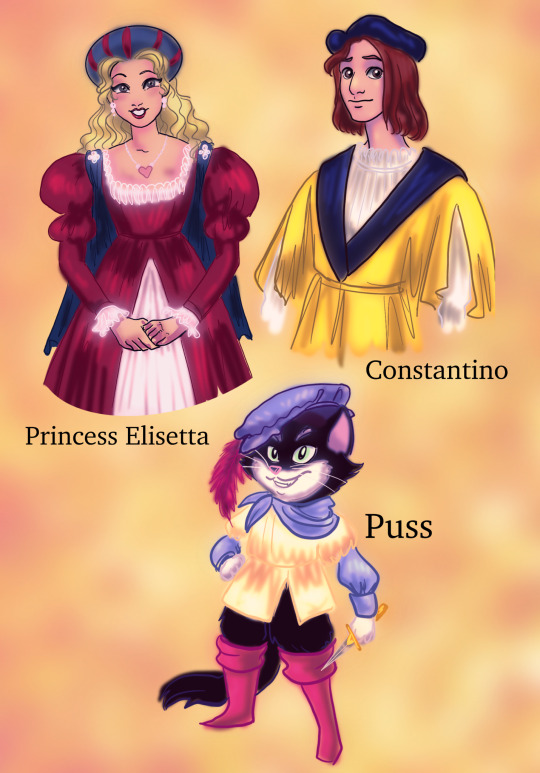
I based their designs somewhat after the drawings in a book that went with a Disneyland Record:
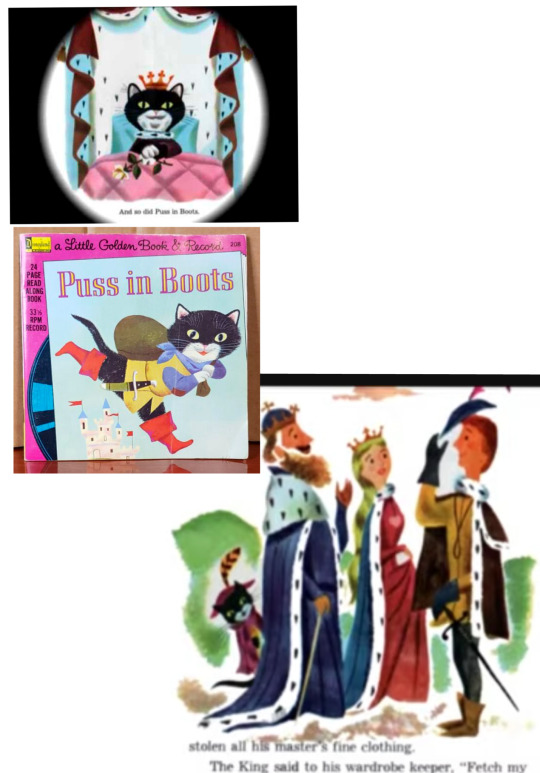
If it was a real movie I would love for the animation to invoke all the beautiful artworks that were being created at the time and there would definitely be lots of cameos of famous artists in it
#asks#puss in boots#DisneyVerse#disney#disneyland records#fairytales#italian renaissance#Disney Movie Concepts
32 notes
·
View notes
Text



Years ago, I drew concept art for how I would adapt the Italian fairytale, Prunella, in a Disney-esque style. Recently, I got inspired to draw some new art of the characters.
I kept some aspects of the story the same, but changed it a bit on certain things. One of my biggest changes was in Bensiabel, the witch's son. I made him resemble his mother and made him mute.
So here are the following images, in order:
Prunella being threatened after being captured by the witch, Marcella.
Bensiabel trying to signal to Prunella that he can help her with one of the witch's impossible tasks that Prunella is supposed to complete. In this case, it's filling a basket with water. Prunella thinks he's trying to trick her, so she's scared of him.
Bensiabel using Italian sign language to say "te amo/I love you" to Prunella. I'm not fluent in sign language of any kind. I only know a few signs I use with my baby. But I found it online. So yay for that!
For more art of them, visit my deviantART gallery. Enjoy!
#porcelain requiem#porcelainrequiem#prunella x bensiabel#bensiabel#prunella fairytale#prunella#sign language#italian sign language
5 notes
·
View notes
Text


Bambi: This is the last plate.
Pinocchio: Go, cleaning crew!
Aurora: Yay for us! Today was a great day, wasn't it?
Pinocchio: One of the best! Having more people around gives me more hope that all our friends will be here someday.
Bambi: Yeah, and seeing Florian so happy was awesome. Do you guys think he will move out?
Aurora: I believe he will, but not now. We've been talking, and he is very anxious about Snow's memories. Since Belle is losing more and more of her memories, mine aren't the best either...
Bambi: Mine too... Everything is getting a little blurry.
Pinocchio looked at his fingers. He remembered they were once wood and then became fully human... Now he is something in between, almost like a human doll. There was a story behind it, he couldn't remember the whole thing, but he knew the important parts.
Memories of his father and Jiminy, the smell of fire, the taste of his father's stew, that one kiss from the girl with brown hair on May Day's Fair. He remembers the Blue Fairy and her visits on his birthday. He would not forget those things... He also knew he was the lucky one.
Aurora: He said he wants to take things slowly. I think it's fair. No one needs to rush into marriage. At least not here.
Pinnochio: Funny...
Bambi: What?
Pinocchio: Belle said something similar.
Aurora: About Florian?
Pinocchio: No, about love and relationships here and in Faerie.
Aurora: Erm... Well we do think alike.
#ts4#ts4 gameplay#sims 4 gameplay#mmbnf#buildingnewfaerie#the sims 4#ts4 bacc#ts4 fairy tale#ts4 disney#the sims 4 disney#The brown haired girl is from a italian fairytale#she will show up at some point#are you catching up what I am putting down?
2 notes
·
View notes